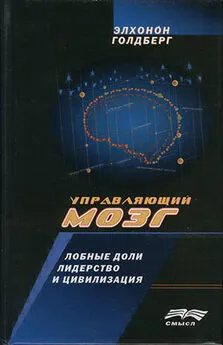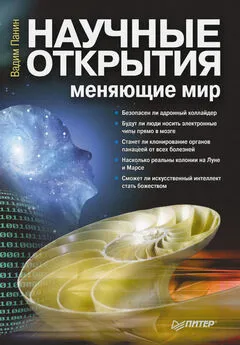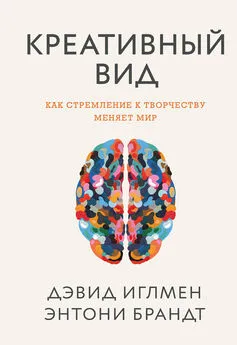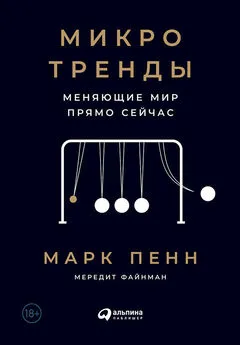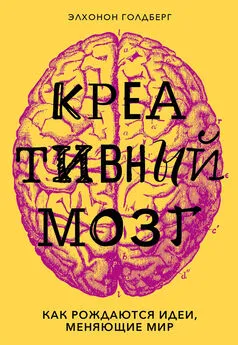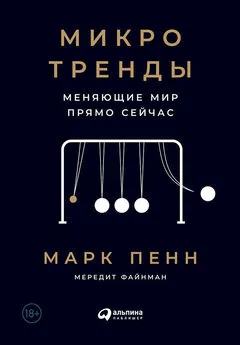Элхонон Голдберг - Креативный мозг [Как рождаются идеи, меняющие мир] [litres]
- Название:Креативный мозг [Как рождаются идеи, меняющие мир] [litres]
- Автор:
- Жанр:
- Издательство:Литагент 5 редакция «БОМБОРА»
- Год:2019
- Город:Москва
- ISBN:978-5-04-105057-3
- Рейтинг:
- Избранное:Добавить в избранное
-
Отзывы:
-
Ваша оценка:
Элхонон Голдберг - Креативный мозг [Как рождаются идеи, меняющие мир] [litres] краткое содержание
Какова природа творчества? Какая работа разума скрывается за его мистикой? Каковы эволюционные корни креативности? В книге нейробиолога и нейропсихолога Элхонона Голдберга эти и другие вопросы рассматриваются как с научной, так с исторической и культурологической точек зрения, превращаясь в масштабное и увлекательное исследование. Опираясь на результаты последних открытий и исследований мозга, а также на собственные идеи и гипотезы, Голдберг приходит к оригинальному, убедительному и даже провокационному пониманию природы творчества и креативности. Читатель совершит удивительное путешествие сквозь эпохи и страны: от античности до далекого будущего, от Западной Европы до Юго-Восточной Азии. Автор делает смелые прогнозы о перспективных направлениях творчества и инноваций, объясняя их биологические и культурные истоки, рассказывает о том, как они сформируют общество будущего и изменят способы развития человеческого мозга.
Креативный мозг [Как рождаются идеи, меняющие мир] [litres] - читать онлайн бесплатно ознакомительный отрывок
Интервал:
Закладка:
42. N. Andreasen, «Creativity and Mental Illness: Prevalence Rates in Writers and Their First-degree Relatives», American Journal of Psychiatry 144 (1987): 1288–1292.
43. S. Kyaga, P. Lichtenstein, M. Boman, C. Hultman, N. Långström, and M. Landén, «Creativity and Mental Disorder: Family Study of 300,000 People with Severe Mental Disorder», British Journal of Psychiatry 199 (2011): 373–379; K. R. Jamison, «Mood Disorders and Patterns of Creativity in British Writers and Artists», Psychiatry 52 (1989): 125–134.
44. V. E. Golimbet, M. G. Aksenova, V. V. Nosikov, V. A. Orlova, and V. G. Kaleda, «Analysis of the Linkage of the Taq1A and Taq1B Loci of the Dopamine D2 Receptor Gene with Schizophrenia in Patients and Their Siblings», Neuroscience and Behavioral Physiology 33 (2003): 223–225.
45. S. Keri, «Genes for Psychosis and Creativity. A Promoter Polymorphism of the Neuregulin 1 Gene Is Related to Creativity in People with High Intellectual Achievement», Psychological Science 20 (2009): 1070–1073; J. Hall, H. C. Whalley, D. E. Job, B. J. Baig, A. M. McIntosh, K. L. Evans, P. A. Thomson, D. J. Porteous, D. G. Cunningham-Owens, E. C. Johnstone, and S. M. Lawrie, «A Neuregulin 1 Variant Associated with Abnormal Cortical Function and Psychotic Symptoms», Nature Neuroscience 9 (2006): 1477–1478; A. M. McIntosh, T. W. Moorhead, D. Job, G. K. Lymer, S. Muñoz Maniega, J. McKirdy, J. E. Sussmann, B. J. Baig, M. E. Bastin, D. Porteous, K. L. Evans, E. C. Johnstone, S. M. Lawrie, and J. Hall, «The Effects of a Neuregulin 1 Variant on White Matter Density and Integrity», Molecular Psychiatry 13 (2008): 1054–1059; B. Barbot, M. Tan, and E. L. Grigorenko, «The Genetics of Creativity: The Generative and Receptive Sides of the Creativity Equation», in Neuroscience of Creativity, Eds. O Vartanian, A. S. Ristol, and J. C. Kaufman (Cambridge, MA: MIT Press, 2013): 72–93.
46. J. A. Pratt, C. Winchester, A. Egerton, S. M. Cochran, and B. J. Morris, «Modelling Prefrontal Cortex Deficits in Schizophrenia: Implications for Treatment», British Journal of Pharmacology 153 (2008): 465–470; C. E. Bearden, K. M. Hoffman, and T. D. Cannon, «The Neuropsychology and Neuroanatomy of Bipolar Affective Disorder: A Critical Review», Bipolar Disorders 3 (2001): 106–150; A. Anticevic, M. S. Brumbaugh, A. M. Winkler, L. E. Lombardo, J. Barrett, P. R. Corlett, H. Kober, J. Gruber, G. Repovs, M. W. Cole, J. H. Krystal, G. D. Pearlson, and D. C. Glahn, «Global Prefrontal and Fronto-Amygdala Dysconnectivity in Bipolar I Disorder with Psychosis History», Biological Psychiatry 73 (2013): 565–573; Y. I. Sheline, J. L. Price, Z. Yan, and M. A. Mintun, «Resting-State Functional MRI in Depression Unmasks Increased Connectivity Between Networks Via the Dorsal Nexus», Proceedings of the National Academy of Sciences 107 (2010): 11020—11025.
47. Q. Xiao, Y. Zhong, D. Lu, W. Gao, Q. Jiao, G. Lu, and L. Su, «Altered Regional Homogeneity in Pediatric Bipolar Disorder During Manic State: A Resting-State FMRI Study», PLoS ONE 8 (2013): E57978.
48. S. Carson, «Creativity and Psychopathology», in Neuroscience of Creativity, Eds. O. Vartanian, A. S. Bristol, and J. C. Kaufman (Cambridge, MA: MIT Press, 2013).
49. S. Whitfield-Gabrieli, H. W. Thermenos, S. Milanovic, M. T. Tsuang, S. V. Faraone, R. W. McCarley, M. E. Shenton, A. I. Green, A. Nieto-Castanon, P. la Violette, J. Wojcik, J. D. E. Gabrieli, and L. J. Seidman, «Hyperactivity and Hyperconnectivity of the Default Network in Schizophrenia and in First-degree Relatives of Persons with Schizophrenia», Proceedings of the National Academy of Sciences USA 106 (2009): 1279–1284.
50. См. ссылку на TED Talk на тему влияния школы на креативность: www.ted.com/ talks/ken_ robinson_ says_ schools_ kill_ creativity?language=en.
51. Очень подробный обзор этой программы можно найти здесь: R. L. DeHaan, «Teaching Creativity and Inventive Problem Solving in Science», NCBE Life Sciences Education 8 (2009): 172–181.
52. Более подробное описание программы здесь: E. Bodrova and D. J. Leong, Tools of the Mind: The Vygotskian Approach to Early Childhood Education, 2nd edn. (New York: Pearson, 2006); also see: http:// toolsofthemind.org.
53. R. Van der Veer and J. Valsiner, Eds., The Vygotsky Reader, 1st edn. (Hoboken, NJ: Wiley-Blackwell, 1994); подробнее о странной судьбе этой статьи можно найти в кн.: E. Goldberg, The Wisdom Paradox: How Your Mind Can Grow Stronger as Your Brain Grows Older (New York: Gotham Books, 2005); и в кн.: E. Goldberg, «Thank You for Sharing This Fascinating Material— Very Interesting», Dubna Psychological Journal 5 (2012): 118–120.
54. A. Diamond, W. S. Barnett, J. Thomas, and S. Munro, «Preschool Program Improves Cognitive Control», Science 318 (2007): 1387–1388; A. Diamond and K. Lee, «Interventions Shown to Aid Executive Function Development in Children 4—12 Years Old», Science 333 (2011): 959–964; C. Blair and C. C. Raver, «Closing the Achievement Gap Through Modification of Neurocognitive and Neuroendocrine Function: Results from a Cluster Randomized Controlled Trial of an Innovative Approach to the Education of Children in Kindergarten», PLoS One 9 (2014): E112393.
55. Более подробную информацию о «Школах Минервы» можно найти здесь: www.minerva.kgi.edu; www.youtube.com/ watch?v=5-NRAg0_ y1I.
1. S. F. Witelson, D. L. Kigar, and T. Harvey, «The Exceptional Brain of Albert Einstein», The Lancet 353 (1999): 2149–2153.
2. D. Falk, F. E. Lepore, and A. Noe, «DOI the Cerebral Cortex of Albert Einstein: A Description and Preliminary Analysis of Unpublished Photographs», Brain (2012): 1304–1327.
3. W. Men, D. Falk, T. Sun, W. Chen, J. Li, D. Yin, L. Zang, and M. Fan, «The Corpus Callosum of Albert Einstein’s Brain: Another Clue to His High Intelligence?» Brain 137 (2013): 1–8.
4. M. C. Diamond, A. B. Scheibe, G. M. Murphy, and T. Harvey, «On the Brain of A Scientist: Albert Einstein», Experimental Neurology 88 (1985): 198–204.
5. O. S. Adrianov, I. N. Bogolepova, S. M. Blinkov, L. A. Kukuev, «The Study of V. I. Lenin’s Brain», [article in Russian] Uspekhi Fiziologicheskikh Nauk 24 (1993): 40–52.
6. See link for more on Gauss’s brain: https:// www.mpg.de/ 7589532/ Carl_Friedrich_ Gauss_ brain; R. Schweizer, A. Wittmann, J. Frahm, «A Rare Anatomical Variation Newly Identifies the Brains of C. F. Gauss and C. H. Fuchs in a Collection at the University of Gottingen», Brain 137 (2013): 1–2.
7. A. Dietrich and N. Srinivasan, «The Optimal Age to Start a Revolution», The Journal of Creative Behavior 41 (2007): 54–74.
8. E. S. Finn, X. Shen, D. Scheinost, M. D. Rosenberg, J. Huang, M. M. Chun, X. Papademetris, and R. T. Constable, «Functional Connectome Fingerprinting: Identifying Individuals Using Patterns of Brain Connectivity», Nature Neuroscience 18 (2015): 1664–1671; M. D. Rosenberg, E. S. Finn, D. Scheinost, X. Papademetris, X. Shen, R. T. Constable, and M. M. Chun, «A Neuromarker of Sustained Attention from Whole-Brain Functional Connectivity», Nature Neuroscience 19 (2016): 165–171.
9. Y. Li, Y. Liu, J. Li, W. Qin, K. Li, C. Yu, and T. Jiang, «Brain Anatomical Network and Intelligence», PLoS Computational Biology 5 (2009): E1000395.
10. D. J. Smit, C. J. Stam, D. Posthuma, D. I. Boomsma, and E. J. De Geus, «Heritability of «Small-World» Networks in the Brain: A Graph Theoretical Analysis of Resting-State EEG Functional Connectivity», Human Brain Mapping 29 (2008): 1368–1378.
11. L. Wang, C. Zhu, Y. He, Y. Zang, Q. J. Cao, H. Zhang, Q. Zhong, and Y. Wang, «Altered Small-World Brain Functional Networks in Children with Attention-Deficit/ Hyperactivity Disorder», Human Brain Mapping 30 (2009): 638–649.
12. E. M. Miller, «Intelligence and Brain Myelination: A Hypothesis», Personality and Individual Differences 17 (1994): 803–832.
13. J. M. Fuster, The Neuroscience of Freedom and Creativity: Our Predictive Brain (Cambridge, UK: Cambridge University Press, 2013): 176.
14. E. R. Sowell, B. S. Peterson, P. M. Thompson, S. E. Welcome, A. L. Henkenius, and A. W. Toga, «Mapping Cortical Change Across the Human Life Span», Nature Neuroscience 6 (2003): 309–315; F. I. M. Craik and E. Bialystok, «Cognition Through the Lifespan; Mechanisms of Change», Trends in Cognitive Sciences 10 (2006): 131–138.
15. D. J. Millera, T. Dukaa, C. D. Stimpson, S. J. Schapiro, W. B. Baze, M. J. McArthur, A. J. Fobbs, A. M. M. Sousa, N. Sestan, D. E. Wildman, L. Lipovich, C. W. Kuzawa, P. R. Hof, and C. C. Sherwood, «Prolonged Myelination in Human Neocortical Evolution», Proceedings of the National Academy of Sciences 109 (2012): 116480—16485.
16. L. Marner, J. R. Nyengaard, Y. Tang, and B. Pakkenberg, «Marked Loss of Myelinated Nerve Fibers in the Human Brain with Age», Journal of Comparative Neurology 462 (2003): 144–152.
17. N. Raz, K. M. Rodrigue, and E. M. Haacke, «Brain Aging and Its Modifiers: Insights from in Vivo Neuromorphometry and Susceptibility Weighted Imaging», Annals of the New York Academy of Sciences 1097 (2007): 84–93.
18. E. Goldberg, The Wisdom Paradox: How Your Mind Can Grow Stronger as Your Brain Grows Older (New York: Gotham Books, 2005).
19. M. J. Valenzuela, P. S. Sachdev, W. Wen, R. Shnier, H. Brodaty, and D. Gillies, «Dual Voxel Proton Magnetic Resonance Spectroscopy in the Healthy Elderly: Subcortical-Frontal Axonal N-Acetylaspartate Levels Are Correlated with Fluid Cognitive Abilities Independent of Structural Brain Changes», Neuroimage 12 (2000): 747–756.
20. K. Kantarci, C. R. Jack, Y. C. Xu, N. G. Campeau, P. C. O’Brien, G. E. Smith, R. J. Ivnik, B. F. Boeve, E. Kokmen, E. G. Tangalos, and R. C. Petersen, «Regional Metabolic Patterns in Mild Cognitive Impairment and Alzheimer’s: A 1H MRS Study», Neurology 55 (2000): 210–217; S. H. Patel, M. Inglese, G. Glosser, D. L. Kolson, R. I. Grossman, and O. Gonen, «Whole-Brain N-acetylaspartate Level and Cognitive Performance in HIV Infection», AJNR: American Journal of Neuroradiology 24 (2003): 1587–1591.
21. K. Nordengen, C. Heuser, J. E. Rinholm, R. Matalon, and V. Gundersen, «Localisation of N-acetylaspartate in Oligodendrocytes/ Myelin», Brain Structure and Function 220 (2015): 899–917.
22. A. L. Alexander, J. E. Lee, M. Lazar, and A. S. Field, «Diffusion Tensor Imaging of the Brain», Neurotherapeutics 4 (2007): 316–329.
23. R. Westerhausen, C. Walter, F. Kreuder, R. A. Wittling, E. Schweiger, and W. Wittling, «The Influence of Handedness and Gender on the Microstructure of the Human Corpus Callosum: A Diffusion-Tensor Magnetic Resonance Imaging Study», Neuroscience Letters 351 (2003): 99—102; R. Westerhausen, F. Kreuder, S. Dos Santos Sequeira, C. Walter, W. Woerner, R. A. Wittling, E. Schweiger, and W. Wittling, «Effects of Handedness and Gender on Macro-and Microstructure of the Corpus Callosum and Its Subregions: A Combined High-Resolution and Diffusion-Tensor MRI Study», Cognitive Brain Research 21 (2004): 418–426.
24. H. Takeuchi, Y. Taki, Y. Sassa, H. Hashizume, A. Sekiguchi, A. Fukushima, and R. Kawashima, «White Matter Structures Associated with Creativity: Evidence from Diffusion Tensor Imaging», Neuroimage 51 (2010): 11–18.
25. D. W. Moore, R. A. Bhadelia, R. L. Billings, C. Fulwiler, K. M. Heilman, K. M. J. Rood, and D. A. Gansler, «Hemispheric Connectivity and the Visual – Spatial Divergent-Thinking Component of Creativity», Brain and Cognition 70 (2009): 267–272.
Читать дальшеИнтервал:
Закладка:
![Обложка книги Элхонон Голдберг - Креативный мозг [Как рождаются идеи, меняющие мир] [litres]](/books/1065923/elhonon-goldberg-kreativnyj-mozg-kak-rozhdayutsya-id.webp)
